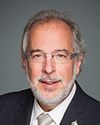It's a great question.
It's fair to say that Huron Church Road links the Ambassador Bridge at one end to the Herb Gray Parkway—or effectively the 401—on the other, and it's three kilometres from point to point.
It's a municipal road with approximately seven traffic lights, and it was constructed almost 100 years ago. It used to be farmland, and it's evolved over time. You have hotels and motels; you still have some homes whose driveways outlet onto Huron Church Road; you have over 200 businesses and banks and shopping centres that require access. Also, you have Assumption High School, which was directly in the protest area and was not accessible for the week of the protest.
Huron Church is also the primary access road for the vast majority of students accessing the University of Windsor. It is a crucial link for many in the city, and it has built up over time to be quite a trade corridor, doing more than just serving the trucks that access the Ambassador Bridge.



